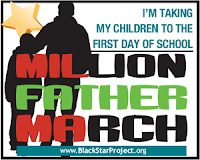 From my dear friends over at the National Council for Research on Women comes this (cool graphic, ladies over there!):
From my dear friends over at the National Council for Research on Women comes this (cool graphic, ladies over there!):
Join Kimberle Crenshaw, Kim Gandy, Chandra Mohanty, Ellie Smeal and other leading scholars, researchers, advocates, and policy makers from across various disciplines and fields June 5-7, 2008 at the Kimmel Center at NYU for our Annual Conference. Share information and resources; learn about cutting edge and emerging research on women, gender, and girls; and strategize about ways to work across communities and fields of study.
This year’s conference themes will center around where women can have the most impact in the 2008 Presidential election and beyond, including research and policy issues that will need to be addressed with a new administration; challenges women in the academy confront—backlash, shrinking budgets, corporatization, conservative social pressures—and what can be done to counter them; and the implications of the intersections of race, class, gender, ethnicity, sexuality, nation, generation and other markers of difference for feminist scholarship, leadership, and activism, nationally and globally.
Early registration starts now. For more info, contact ncrw@ncrw.org







